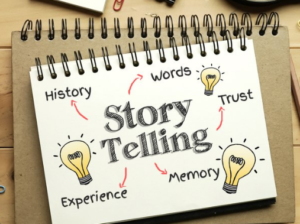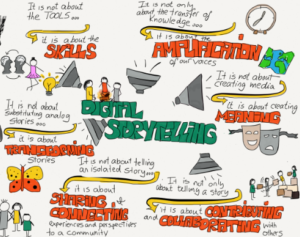Tag: keep it simple
My Credit Union Just Lowered the Bar on Bad Customer Experiences
Have you been fooled by a company you have done business with for many, many years? When I say fooled, I mean the broken kind of trust fooled. And yes Seth, I do want to talk about it. It involves bad customer experiences that my daughter and her husband had with their credit union. Turns out it is our credit union also.
You can’t fool people all the time, not even most of the time. And people, once unfooled, talk about the experience.
–Seth Godin
Michelle and Matt are the victims here. They were in the process of a mortgage approval with another bank (purchasing a new home and the builder’s company offered a good deal and speedy approval). During the process, they received a telephone call from the new banker wanting to know what the payments of $836 over the past 9 months to their credit union were for. They had no idea.
But here was the deal. The credit union was charging them $3 each to transfer money from their savings to their checking account for the first 6 transfers each month. After the first 6, the fee for the transfer was $25 for each transfer. This was going on for 9 months with no communication from the credit union whatsoever (totaling $836 in fees during that time). So $836 in fees for using their own money. When they called for an explanation, the bank’s only response in that was their policy on fees for that type of transfer. End of explanation.
Their next move was letters to the bank CEO and the member services committee, explaining the situation. Here is a copy of their letter:
We have been Visions Credit Union members since we graduated from college 15 years ago. Until now, Visions is the only bank with whom we have done business. The same is true for my husband. That is something that will change. Let us explain.
Over the last few weeks, we have been in the process of buying a new house and selling our old one. As a result, we have been in the process of a loan certification process. One question that surprised us was why we had paid Visions $836 over the last 9 months to use our own money. In doing research on the question, we realized you have charged us a $3.00 service charge to automatically transfer from our savings account to our checking account. And to top that, once we reached 6 transfers per month the service charge went to $25 per transfer.
We went back over our correspondence with Visions and could find no notification of the change in your process of adding service charges to move our money from one account to the other. We accept responsibility for not reviewing our account on a regular basis. But to our defense, a sense of trust was involved on our part. That was obviously a big mistake.
After our research on the issue, we immediately called Visions to discuss the issue and seek a refund. Your response: there was nothing you were going to do because your process was to respond to appeals only and we had 30 days to appeal each service charge. This is a very poor response for 15-year loyal customers holding a mortgage, home equity loan, and a respectable amount of money in our savings and checking accounts. We asked why this had happened and your response was that this was according to your policy. We asked why, when we had over $10,000 in our accounts, we were being charged anything. Again, we were told that was your policy.
We are sending this letter to you, as bank CEO, because we feel it was important for you to hear concerns such as these, directly from your members and not your staff. We believe it is a crucial reason you are losing valuable customers.
We accept responsibility for not checking our account each month. But we trusted we would hear from you if there were issues. But that was not the case.
Given that we have researched what other banks do in similar situations (nothing close in terms of fee policies) and our lack of trust in your bank, we will be selecting a new bank.
Why are we sending this letter directly to you? It is simple. You apparently are the only one with the ability to deal with this issue and consider changing your policies.
Sincerely,
| Matt and Michelle Ellis | |||||||||||||
| So what was the response? The Vice President in charge of Member Services called our daughter and could not have been more apologetic. He said that he and the CEO had been with the credit union for a little over a year and were in the process of reviewing all fee processes and putting them in line with their competitors. These fees were clearly not good policy or in line with the competition. He returned the $836 in fees completely. He also stated that they were giving the branch manager much more ability to make decisions with customers. Certainly much needed, don’t you think? (Want to see how another company handled a bad situation? … How Marriott Courtyard Turned Customer Failure into Service Recovery) Key takeaways All we can say is that good customer experiences start and end with effective communication. In this case, the absence of communications created the significance of the surprise, didn’t it? They also greatly depend on keeping up with the competition … it is a comparative thing. And finally, employee empowerment is a necessity. Without good empowerment, things can get out of hand in a hurry. Do you have a lesson about making your customer focus better that you can share with this community? Have any questions or comments to add in the section below? So what’s the conclusion? The conclusion is there is no conclusion. There is only the next step. And that next step is completely up to you. It’s up to you to keep improving your customer attention and focus. Lessons are all around you. In many situations, your competitor may be providing the ideas and or inspiration. But the key is in knowing that it is within you already. All you get is what you bring to the fight. And that fight gets better every day you learn and apply new lessons. When things go wrong, what’s most important is your next step. Try. Learn. Improve. Repeat. Are you devoting enough energy to improving your continuous learning for yourself and your team? More reading on customer focus from Digital Spark Marketing’s Library: 10 Laws of Customer Experience Design What Little Things Small Businesses Can Do To Build Customer Relationships Customer Experience Improvements Begin with Understanding Their Value |
Ways to Learn to Speak Like Ronald Reagan
Now that we’ve got your attention, you should realize, of course, that you don’t want to speak like Ronald Reagan. You want to learn to speak like you. Nevertheless, as a student of the art of public speaking, you can — and should — observe Reagan’s oratorical skills. The greats all learn from other greats, so don’t hesitate. Study Reagan’s repertoire, take what you like, and use what you can to improve your own public speaking.
Reagan is a master at grabbing and keeping his audience’s attention, which is the number one goal of any public speaker.
How does he do it? Here are five key lessons from his speaking.
Talk About the Audience’s Concerns
Notice that when Reagan addressed a joint session of Congress for the first time, he told our story
before he told his own. He talked about our sleepless nights, for example, and the college admission
that might have to be turned down because of a lack of financing.
This was brilliant, and you can do it, too. Start your talk by broadly defining the situation that your
listeners face. Then, once you’ve got them nodding their heads in agreement, move on to describe
the problems or challenges that are on their minds. Start where the audience is, not where you are.
Once you have their attention, you can lead your listeners wherever you want to take them.
Keep It Simple
Throughout the presidential campaign, Reagan kept his main message — “change you can believe
in” — simple and easy to remember. Sure, some pundits mocked its simplicity, but it served its
purpose perfectly as the banner at the front of his parade. You, too, can keep it simple, even if you
have mountains of research to report.
First, fine-tune your core message. Reagan won people through a simple slogan, which then allowed him to more easily serve up his ideas about meaty topics such as health care, terrorism, and the crumbling economy.
We make a serious error if we mistake a complete argument for a persuasive one. All audiences, no
matter how sophisticated, have limited attention spans and a limited ability to retain detailed spoken
information. Don’t fear that you’re leaving details out; you must be selective. After all, what good is a
thorough and detailed argument if it is inaccessible?
Anticipate What Your Audience Is Thinking
Obama and his speechwriters are certainly aware of the great line by Goethe, “Every word that is
uttered evokes the idea of its opposite.” What this means is that when you express one view, the
odds are high that people will reflexively think about other, unmentioned aspects of the topic.
A presentation that does not deal with this “evoking of opposites” loses the audience’s attention
because it fails to address the questions and concerns that come up in people’s minds. So anticipate
it. Show your audience that you understand the contrary view better than they do, and explain why
your proposal or argument is still superior.
His speech was powerful and widely praised. It was effective in part because Reagan let everyone
know that he had thought a lot about race, and in particular about both sides of the controversy.
Attack your topics this way, too, and you will be in charge of the conversation. This approach will not
only grab and hold the attention of your listeners, but it will also help you win people into your camp,
which is what you need to do if, say, your goal is to persuade your board of directors of the wisdom
of a seemingly risky partnership.
–
Learn to Pause
Reagan had mastered the art of pausing. Just check out his presidential acceptance speech to
see this skill at work. He pauses to let us catch up with him. He pauses to let his words
resonate. He pauses, in a sense, to let us rest. Pauses also give the impression of composure and
thoughtfulness.
Here’s an exercise to help you learn to pause.
• Mark up your paragraphs / in this manner / into the shortest possible phrases. / First, / whisper
it, / breathing / at all the breath marks. / Then, / speak it / in the same way. / Do this / with a
different paragraph / every day.
• “If there is anyone out there / who still doubts / that America is a place / where all things are
possible, / who still wonders / if the dream of our founders / is alive in our time, / who still
questions / the power of our democracy, / tonight / is your answer.”
Where you pause is up to you; there are no hard and fast rules. But try it. Slowly inhale to the count
of three at each breath mark. Speak as though you had plenty of time. The goal / of this exercise / is
to teach your body / to slow down.
Master the Body Language of Leadership
Reagan’s body language is relaxed and fluid. It does not display tension or fear. He’s calm and
assertive — which is exactly what you need to be to get people to comply with your requests.
To achieve the body language that’s effective for you, focus on a single attribute — for example,
calm — and practice implementing it in the basic motions of your day, from getting dressed in
the morning, to leaving your home for work, to greeting your friends and colleagues.
Research in Scientific American suggests that focusing on one word is the most effective way to learn a new behavior. It will probably feel forced at first, but don’t worry. It will soon become natural, and
eventually, your body language will communicate the right mix of calm and assertiveness.
Finally, you’ll need to rehearse. Practice calmly walking up to the lectern or the front of the room.
Arrange your papers calmly. Look out to the audience with a sense of command, with assertiveness.
Let the silence hang for a moment, and only then deliver your opening remarks.
Calmness begets a sense of authority. Behave as if you are in control, and you will in fact gain
control and command attention.
How to Use Custom Packaging as a Marketing Tool
When people receive products in personalized packaging, they feel more special and unique. In addition, it also becomes easier for individuals to find the packages that they have ordered online. This article will show you what you need to know about custom packaging and how it can help boost your company’s success!

The Basics of Custom Packaging
Custom packaging is a type of packaging that you can create yourself or with the help of professionals. You can use a variety of different materials, such as paper, plastic, glass, and metal. In addition to customizing your appearance for your product, you can also add features such as laser etching and other personalization options to easily identify who the product belongs to. What you’ll need is a good design for your custom box, glitter or plastic window options, a high-quality printer, and a good quality cartoner that can produce both cartons and trays on a single machine. When you start making your packaging, keep in mind that you should also be able to print on the packaging itself.
Including Custom Packaging with Your Product
When you’re selling your product, it’s a good idea to include custom packaging with what you sell. You can add your company or brand logo to the outside of the box and return address labels for each person who has ordered from you. You can also offer different personalized options that are unique to each product, such as including the recipient’s name on a gift card inside. You can also pack with a custom minifig collection for example Lego Marvel Minifigure if your client is a marvel avengers fan. These types of customizations can help you to create your brand and make it easier for customers to remember who they’ve ordered from, especially if you sell products online.
Custom Packaging and Marketing
One of the main reasons that custom packaging is used is because it works as a marketing tool. When consumers receive their products in beautifully designed boxes, they are more likely to develop positive feelings towards the company or brand. These consumers are then likely to recommend that brand or product to others, which can lead to more sales. In addition, consumers will be more likely to purchase from you in the future and spend more money on your products because they feel like they’ve received personalized service and that they are valued by the company or brand.
Branding
Another way that custom packaging can help your company is by strengthening your brand. When you include personalization features with your product, such as including the recipient’s name on a gift card, consumers will develop positive feelings towards the company and create memories every time they use or open their product. You can also include other elements in your design, such as including the company’s logo on the outside of the packaging.
Branding generally refers to your company’s name and all of its logos and other visual elements. For example, if you think about Coca-Cola, you’ll recognize their red bottles and unique logo. Branding is the art of creating a specific design for your products to help consumers easily identify them as coming from that company or brand. This branding is exactly what should be seen on your packaging. So, when designing the outside of the box, be sure that it includes your logo or some other type of branding element that will help consumers identify the brand. Also, if you are including different customization options for your products, such as including the recipient’s name on a gift card, be sure that these designs look good together to create a unique and cohesive design that enhances your branding efforts.
Customer Experience
The main reason why custom packaging is such a great marketing tool is that custom packaging can also help you to create a great customer experience. This is especially important for online businesses since customers cannot see the product they have purchased in person. When customers receive their products in beautiful boxes with custom designs, it can increase their positive feeling about your company or brand and make them feel more comfortable ordering from you.
In addition, you can design your custom boxes so that they are very easy to open. If your products are wrapped in bubble wrap or other types of packaging, consider putting the actual product on top of the custom box. That way, it’s easier for your customers to get into their products once they have taken them out of the custom boxes. Custom packaging emphasizes the customer experience and can help you to boost your sales.
Letting Customers Personalize Their Packaging
One of the best ways to use custom packaging as a marketing tool is by letting customers customize their purchases. This will give them the impression that you truly care about each customer and that what they want matters. Many companies allow their customers to choose different options, such as including the recipient’s name on a gift card along with boxes for adding personalized messages. There are a few different ways that you can personalize your products, such as including a gift card with a printed message from the sender or including the recipient’s name on the packaging.
This will make them feel special and create positive feelings about your company or brand. In addition, this is great for business because consumers who feel valued will be more likely to order from you in the future. The way that you personalize your packaging can vary depending on who is buying the product. For example, for children’s toys, including a personalized message or name on the outside of the box can make it seem like an exciting new game or toy that is just for them! You can also create special customizations for men and women, such as including their full name on the packaging. Personalized messages like this show that you value each individual customer and that creating a product designed specifically for them is important to your company or brand.

Packaging is a great way to market your company or brand. Consumers will develop feelings for your business when they receive their products in beautiful custom boxes, which can lead to more sales and brand recognition. If you are looking for something new to offer your customers, try custom packaging and see what a difference it makes in your business!
How to Optimize Your Start To Maximize Readership
Here’s how you can optimize your start, attract positive attention from your target audience, and get more views:

Quote a Relevant Personality
People will associate the credibility attached to certain famous personalities with your work if you cite them. Aside from this, their name alone will turn heads – especially avid fans who are interested to hear the opinions of those who also follow in the footsteps of their favorite celebrity or public figure.
Example: American motivational speaker Denis Waitley aptly states, “Never become so much of an expert that you stop gaining expertise. View life as a continuous learning experience.”
Employ a Compelling Idea
People are tired of hearing the same old thing over and over again. Jumping out at them with an interesting and unique idea makes your content shine through the competition. If you don’t have any snappy ideas yet, try to reframe a simple sentence into an engaging one.
Example: Evernote’s above the folded copy is very simple yet presents a compelling idea. “Remember Everything.” It then goes on to describe how to get it done. “Modern life can be complicated. Simplify it with Evernote, the app to manage it all.”
Intrigue Them with a Question
Do you agree that an intriguing tone hooks people’s attention right away? We do. This tried and tested method makes people think of a “what if” scenario that keeps them reading on to the next paragraphs. Open with this hook and you’re sure to keep people interested.
Example: What if you knew exactly how to get the most out of Facebook’s Newsfeed Algorithm?
Quote a Relevant Personality
People will associate the credibility attached to certain famous personalities with your work if you cite them. Aside from this, their name alone will turn heads – especially avid fans who are interested to hear the opinions of those who also follow in the footsteps of their favorite celebrity or public figure.
Example: American motivational speaker Denis Waitley aptly states, “Never become so much of an expert that you stop gaining expertise. View life as a continuous learning experience.”
Use Shocking Statistics
Seasoned writer Richard Evans, from editing service EduGeeksClub, states that “In the same way that looking at an old life event from a different perspective makes it more interesting, starting off any topic with interesting statistics can catch people’s attention. This adds credibility to your work and makes it more unique than simply describing the topic at hand.”

Example: Women comprise 46% of the total US labor force and yet they make only 77.5 cents for every dollar that men earn.
Employ a Relatable Story or Joke
People prefer creative narratives over blatant self-advertisement, so if you want people to notice your pitch, lighten up the mood first and relate to people’s interests. Use familiar examples and stories that will pique people’s attention and keep them from drifting off into a different page.
Example: Brilliant 19th-century violinist and master showman Nicolo Paganini regularly performed at packed concert halls in Italy with a full orchestra.
Towards the end of one such performance, while Paganini’s unbelievable composition is putting the audience in awe, a string from his instrument suddenly snapped. Paganini continued to play and improvised brilliantly.
But luck was not on his side that night as another string snapped, and then the third one. Like a slapstick comedy, Paganini stood in the spotlight with three strings dangling from his Stradivarius. Instead of walking offstage, he completed his piece with just one string.
It happens to the best of us, but the key is to not give up. The show must go on.
Keep It Simple
Don’t go over-the-top with your initial paragraph. Your purpose is to hook your readers in, not distract them with a wordy start. Keep it simple with a clear and concise beginning. Avoid putting in unnecessary descriptions or filler words that might move away from your main points.
“Don’t go into great detail describing places and things, unless you’re Margaret Atwood and can paint scenes with language” – Elmore Leonard, famous novelist gave his recommendation for writers.
Example: A good hook is important in attracting an audience. People’s shortening attention spans have led them to skip through a bulk of the text to only the most interesting points in a paragraph.
Paint an Image
A vivid picture in people’s minds will definitely give your article a better edge. To create a neat but descriptive start, think of just one main idea. Once you’ve zeroed in on your chosen topic, describe it in the best way you can. Don’t resort to simple adjectives. Think of more unconventional and creative ways to paint that image.
Example: A trip to the countryside often reminds us of a warm summer breeze through an open window. Imagine just relaxing on the way there, the radio humming a soft tune of your favorite music.
Focus on the Blog’s Core Statement
Once you’ve finished the body of your article, it’s time to go back to the start and strengthen your main idea in your conclusion. You can reword it or rephrase it into a different sentence that contains the same concept. Since repeating things to a reasonable extent will make people remember them more, going over your points quickly for the second time makes them more memorable to your readers.
Example: After you’ve written down all your points, it’s time to do a quick run-through of each through a brief summary at the end. “Here are the previous eight points in the review:…”
The bottom line
Achieving people’s total interest in your article can be a challenge, but it’s also very doable. Keep them reading with an intriguing start. Use good questions, quote relevant personalities, reframe otherwise mundane ideas, and most of all, relate to their interests. In writing, remember to keep it simple, but at the same time, let them in on important details that will bring your article to life.
At the end of it all, don’t forget to strengthen your core statement by going right back to your first point in the conclusion. Get off with a good start and reel in more readers!
Tips on How to Design the Best Eye-Catching Infographics
We believe good work should always be celebrated, and we love a good design roundup, so we’ve collected some of the most interesting and eye-catching infographics design techniques.

If users digest messages and take action that much more when accompanied by a visual then why not turn your marketing content into visual content?
Infographics can be a highly effective way to get your content out into the digital in this way and engage your audience than with text alone.
But how do you make sure that yours is more than just another pretty image?
I’ve put together design techniques that I use when designing an infographic that will help you plan and design an infographic that will truly captivate your audience and have them share it with their friends and peers.
Know your audience
This goes hand-in-hand with your content. Just as with any great piece of marketing content, you have to design with your target audience in mind. You could design a really fantastic infographic, but it won’t perform if it doesn’t resonate with your audience.
For example…
Does your audience value get quick information? Great, keep it short and sweet with icons, bullet points, and simple headers. You want to get right to it.
Is your audience older? No problem, just be careful of your typesetting to make sure it is highly legible (i.e. Keep font sizes on the larger side. Use contrasting colors to make it more defined and easier to read).
Is your audience data or numbers-driven? Highlight percentages, stats, and real numbers!
Study the competition
One of the very first things to do when I sit down to start an infographic is to browse inspiration. This will help to put you in the right mindset and will also (hopefully) give you some ideas of the best direction to go in.
If you have final content, make note of layouts that have a similar structure to your content are doing it well. Is it engaging? Does it use visual cues to move the user down through the content? How is the content broken up?
If you don’t have final content, this is a good time to see what lengths of content are captivating and keep the user engaged and build your own wireframe around that.
You may also want to take a look at what people in your industry are doing. This can give you a good idea of what your audience is looking for visually or what content your audience may crave.
Use only strong content
This seems pretty obvious, but I really can’t say it enough. If the content of your infographic is thoughtful and helpful, people will read it. If you throw together some random words just to get an infographic out there, that will translate to the final product.
Quality over quantity, always. This goes for the content itself as well, no need to overwhelm the viewer with dozens of points, when you can get the job done with 5 or 6 really powerful points.
Build a wireframe
Hopping right into the design of your infographic without planning out the layout will only cause you more headaches.
Let’s slow it down to speed it up.
Create a wireframe that includes your content outline, or better yet final content, and start planning where images, icons, dividers, etc. will go.
This is not only a great way to start visualizing your infographic personally, but it’s an AWESOME way to collaborate and ensure buy-in from your team before you put too many hours into the project.
Do a wireframe and review it with your client or team. If something isn’t sitting right structurally or content-wise, this gives you a chance to pivot before you’re in too deep.
If you’re unsure of where to start when creating a wireframe for an infographic take a look at this layout cheat sheet from Piktochart.
Show, don’t tell
Infographics should be just that — graphic. With this medium, it is more powerful to show the point visually through icons or images than to write it out.
Here’s a really fun example from Ziploc that deconstructs ramen hack recipes visually.
This infographic could be in another language entirely and it would be just as engaging. View the full infographic here.
Keep it simple
Don’t over-design it just for the sake of it. Just as with any web design make your visuals purposeful. If it’s not adding to the final product or serving some kind of purpose, then it has no business being in your infographic.
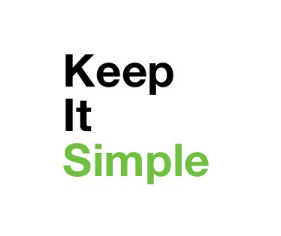
Some of the best infographics take a minimalist approach, and if you can captivate your audience with less design/content/flourish then why the heck not!
Don’t forget the call-to-action
A fatal flaw I see far too often is not including a call-to-action.
Your infographic should tell be part of a journey, so the next steps should ALWAYS be included. Consider what would be the next logical move for the reader with your brand. Are they looking for more information? Are they ready to talk to someone? Would they benefit from a demo?
Again, if you are sharing as a PDF you can just create a linked actionable button like “Get Your Demo Now” or “Talk to Us” but even if you are sharing as a JPEG, I would still recommend wrapping up with verbal guidance.
You can even consider creating a visual button or adding a shortened URL, so the user can easily type that into their browser.
Break it up
Maybe you have a ton of content, or maybe you’ve kept it a bit leaner. Either way, you are going to want to break up your content into bite-sized morsels.
Displaying proper hierarchy among your text will help your user determine what is important, what they can quickly scan, and the rhythm of the content.
I think some of us have grown accustomed to infographics being these extremely intricate designs where when thing flows directly into the next and whitespace is nowhere to be found.
This might actually be causing your users to miss key information and lose interest. Whitespace is essential to readability, allowing your user’s eye to rest and contributing to the hierarchy of the text.
Create vertical movement
We all know that a basic infographic is usually taller than it is wide, this means it is super important for you to guide your user down through the content. There are many subtle ways you can do this.
Some of my favorites include arrows, directional lines, diagonally divided backgrounds, and backgrounds that overlap between two sections.
This infographic by designer, Brianne Boland, is a perfect example of using directional lines and arrows to guide the user.
See the full thing and others in the same series here.
Credit your work
If your infographic is data-heavy chances are you have the sources to back them (or you should) and if you got ‘em flaunt ‘em, baby.
This adds credibility to your content that users will definitely appreciate. You have 2 basic options when doing this.
Include URLs or citations through the content or have a sources section in the proverbial footer of your infographic. These shouldn’t distract from your content or the design but should be subtle and seamless.
Check out how this design from Red Website Design incorporates them into the footer area.
Make it shareable
You’ve put all this work into crafting a freaking awesome infographic that your audience is going to love, and if they love it maybe they have friends and colleagues that will too!

Make it easy for them to share this content by incorporating social sharing buttons into your design. I should note that this will only work if you are sharing your infographic as a PDF, you can link PDFs but not a JPEG, so always check how you are rendering it.
Make it repeatable
This may seem contradictory to the quality over quantity rule, but if you have a lot of content that you’d like to turn into visual content and not a lot of design resources (like limited access to a designer), consider creating a template of sorts where the basic infographic does not change much, but the content can be easily swapped.
This format works best for chart style content that gives users a number and comparisons that are easily digestible.
This is also helpful for creating visual brand consistency across everything you share.
The bottom line
Stick with these ideas and you’ll be sure to have a successful infographic! Don’t be afraid to mix it up from one to the next. If your last infographic isn’t performing how you’d hoped, take a look at what may not have struck a chord.
Is there too much content? Not enough visualization? Did it not get many views, maybe the title needs work. Ask yourself all of these questions and don’t be afraid to try a different approach.
12 Ideas to Supercharge Your Infographic Design
Let me share a quick fact with you. A quick one about how you may supercharge your infographic design.
A recent study found people follow directions with text and illustrations 323% better than with just text. I repeat 323% better. That’s amazing, right?!
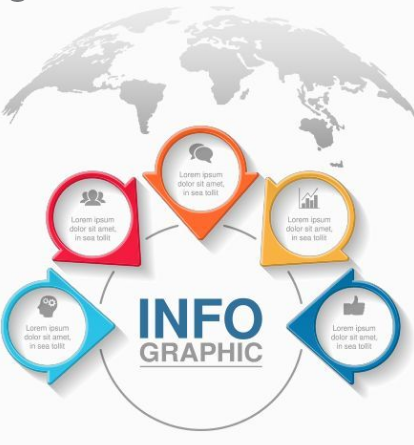
If users digest messages and take action that much more when accompanied by a visual then why not turn your marketing content into visual content?
Infographics can be a highly effective way to get your content out into the digital in this way and engage your audience than with text alone.
But how do you make sure that yours is more than just another pretty image?
I’ve put together 12 ideas that I use when designing an infographic that will help you plan an infographic that will truly captivate your audience and have them share it with their friends and peers.
Learn from the competition
One of the very first things to do when I sit down to start an infographic is to browse inspiration. This will help to put you in the right mindset and will also (hopefully) give you some ideas of the best direction to go in.
If you have final content, make note of layouts that have a similar structure to your content are doing it well. Is it engaging? Does it use visual cues to move the user down through the content? How is the content broken up?
If you don’t have final content, this is a good time to see what lengths of content are captivating and keep the user engaged and build your own wireframe around that.
You may also want to take a look at what people in your industry are doing. This can give you a good idea of what your audience is looking for visually or what content your audience may crave.
There are way too many sites you could check out for inspiration but here are a few of my favorite haunts:
Understand your audience needs
This goes hand-in-hand with your content. Just as with any great piece of marketing content, you have to design with your target audience in mind.
You could design a really fantastic infographic, but it won’t perform if it doesn’t resonate with your audience.
For example…
Does your audience value get quick information? Great, keep it short and sweet with icons, bullet points, and simple headers. You want to get right to it.
Is your audience older? No problem, just be careful of your typesetting to make sure it is highly legible (i.e. Keep font sizes on the larger side. Use contrasting colors to make it more defined and easier to read).
Is your audience data or numbers-driven? Highlight percentages, stats, and real numbers!
Good content is key
This seems pretty obvious, but I really can’t say it enough. If the content of your infographic is thoughtful and helpful, people will read it. If you throw together some random words just to get an infographic out there, that will translate to the final product.
Quality over quantity, always. This goes for the content itself as well, no need to overwhelm the viewer with dozens of points, when you can get the job done with 5 or 6 really powerful points.
Keep it simple
Don’t over-design it just for the sake of it. Just as with any web design make your visuals purposeful. If it’s not adding to the final product or serving some kind of purpose, then it has no business being in your infographic.

Some of the best infographics take a minimalist approach, and if you can captivate your audience with less design/content/flourish then why the heck not!
Create a wireframe
Okay, people! We all know when designing a web page to start with a wireframe, so why are we not doing this for infographics? Hopping right into the design of your infographic without planning out the layout will only cause you more headaches.
Let’s slow it down to speed it up.
Create a wireframe that includes your content outline, or better yet final content, and start planning where images, icons, dividers, etc. will go.
This is not only a great way to start visualizing your infographic personally, but it’s an AWESOME way to collaborate and ensure buy-in from your team before you put too many hours into the project.
Do a wireframe and review it with your client or team. If something isn’t sitting right structurally or content-wise, this gives you a chance to pivot before you’re in too deep.
If you’re unsure of where to start when creating a wireframe for an infographic take a look at this layout cheat sheet from Piktochart.
Be visual on all ideas
Infographics should be just that — graphic. With this medium, it is more powerful to show the point visually through icons or images than to write it out.
Here’s a really fun example from Ziploc that deconstructs ramen hack recipes visually.
This infographic could be in another language entirely and it would be just as engaging. View the full infographic here.
Use small bites
Maybe you have a ton of content, or maybe you’ve kept it a bit leaner. Either way, you are going to want to break up your content into bite-sized morsels.

Displaying proper hierarchy among your text will help your user determine what is important, what they can quickly scan, and the rhythm of the content.
I think some of us have grown accustomed to infographics being these extremely intricate designs where when thing flows directly into the next and whitespace is nowhere to be found.
This might actually be causing your users to miss key information and lose interest. Whitespace is essential to readability, allowing your user’s eye to rest and contributing to the hierarchy of the text.
Prioritize vertical movement
We all know that a basic infographic is usually taller than it is wide, this means it is super important for you to guide your user down through the content. There are many subtle ways you can do this.
Some of my favorites include arrows, directional lines, diagonally divided backgrounds, and backgrounds that overlap between two sections.
This infographic by designer, Brianne Boland, is a perfect example of using directional lines and arrows to guide the user.
See the full thing and others in the same series here.
Make it easy to share
You’ve put all this work into crafting a freaking awesome infographic that your audience is going to love, and if they love it maybe they have friends and colleagues that will too! Make it easy for them to share this content by incorporating social sharing buttons into your design.
I should note that this will only work if you are sharing your infographic as a PDF, you can link PDFs but not a JPEG, so always check how you are rendering it.
Use credits in your work
If your infographic is data-heavy chances are you have the sources to back them (or you should) and if you got ‘em flaunt ‘em, baby.
This adds credibility to your content that users will definitely appreciate. You have 2 basic options when doing this. Include URLs or citations through the content or have a sources section in the proverbial footer of your infographic. These shouldn’t distract from your content or the design but should be subtle and seamless.
Check out how this design from Red Website Design incorporates them into the footer area. Check out the full design here.
Utilize call-to-actions
A fatal flaw I see far too often is not including a call-to-action.
Your infographic should tell be part of a journey, so the next steps should ALWAYS be included. Consider what would be the next logical move for the reader with your brand.
Are they looking for more information? Are they ready to talk to someone? Would they benefit from a demo?
Again, if you are sharing as a PDF you can just create a linked actionable button like “Get Your Demo Now” or “Talk to Us” but even if you are sharing as a JPEG, I would still recommend wrapping up with verbal guidance.
You can even consider creating a visual button or adding a shortened URL, so the user can easily type that into their browser.
Design in repeatability
This may seem contradictory to the quality over quantity rule, but if you have a lot of content that you’d like to turn into visual content and not a lot of design resources (like limited access to a designer), consider creating a template of sorts where the basic infographic does not change much, but the content can be easily swapped.
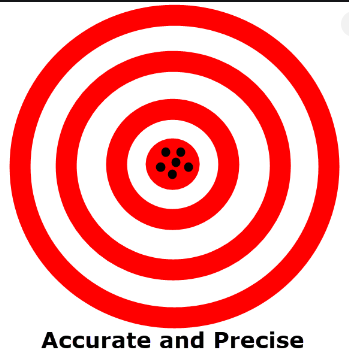
This format works best for chart style content that gives users a number and comparisons that are easily digestible.
This is also helpful for creating visual brand consistency across everything you share.
The bottom line
Stick with these 12 design points and you’ll be sure to have a successful infographic! Don’t be afraid to mix it up from one to the next.
If your last infographic isn’t performing how you’d hoped, take a look at what may not have struck a chord.
Is there too much content? Not enough visualization? Did it not get many views, maybe the title needs work. Ask yourself all of these questions and don’t be afraid to try a different approach.
We tend to overvalue ideas. We think that if we have a good idea, people will immediately see its worth. Yet that’s hardly ever the case. As computer pioneer Howard Aiken put it, “Don’t worry about people stealing your ideas. If your ideas are any good, you’ll have to ram them down people’s throats.”

When things are not what you want them to be, what’s most important is your next step.
Test. Learn. Improve. Repeat.
Are you devoting enough energy improving your marketing, branding, and advertising?
Mike Schoultz is the founder of Digital Spark Marketing, a digital marketing and customer service agency. With 40 years of business experience, he blogs on topics that relate to improving the performance of your business. Find him on Twitter, and LinkedIn.
Digital Spark Marketing will stretch your thinking and your ability to adapt to change. We also provide some fun and inspiration along the way.
More reading on marketing strategy from Digital Spark Marketing’s Library:
Marketing Branding … 9 Secrets to a Continuous Improvement Strategy
Target Market … How to Target for Best Marketing Campaigns
How to Attract Positive Audiences the Right Way
For quite a few decades now, Los Angeles has been a hub of startups and small businesses. Since 2009, technology, computers, electronics products, and food were the leading sectors in LA. Today, the city ranks as one of the top manufacturing centers across the US. With thousands of new brands coming up every year, in every sector imaginable, the competition between the businesses, old and new is fierce. That is why it is so critical to attract positive audiences.

And it is essential to know who those customers are, isn’t it? Businesses that put a priority on understanding their customers and improving consumer targeting know most of them. And they are trying to figure out the questions behind each generation. What motivates them, and what drives their attitudes and behaviors.
Here’s how to attract positive attention from your target audience and get more views:
Start With a Compelling Idea
People are tired of hearing the same old thing over and over again. Jumping out at them with an interesting and unique idea makes your content shine through the competition. If you don’t have any snappy ideas yet, try to reframe a simple sentence into an engaging one.
Example: Evernote’s above the folded copy is very simple yet presents a compelling idea. “Remember Everything.” It then goes on to describe how to get it done. “Modern life can be complicated. Simplify it with Evernote, the app to manage it all.”
Use Shocking Statistics
Seasoned writer Richard Evans, from editing service EduGeeksClub, states that
“In the same way that looking at an old life event from a different perspective makes it more interesting, starting off any topic with interesting statistics can catch people’s attention. This adds credibility to your work and makes it more unique than simply describing the topic at hand.”

Example: Women comprise 46% of the total US labor force and yet they make only 77.5 cents for every dollar that men earn.
Intrigue Them With a Question
Do you agree that an intriguing tone hooks people’s attention right away? We do. This tried and tested method makes people think of a “what if” scenario that keeps them reading on to the next paragraphs. Open with this hook and you’re sure to keep people interested.
Example: What if you knew exactly how to get the most out of Facebook’s Newsfeed Algorithm?
Keep It Simple
Don’t go over-the-top with your initial paragraph. Your purpose is to hook your readers in, not distract them with a wordy start. Keep it simple with a clear and concise beginning.
Avoid putting in unnecessary descriptions or filler words that might move away from your main points.
“Don’t go into great detail describing places and things, unless you’re Margaret Atwood and can paint scenes with language” – Elmore Leonard, a famous novelist gave his recommendation for writers.
Example: A good hook is important in attracting an audience. People’s shortening attention spans have led them to skip through a bulk of the text to only the most interesting points in a paragraph.
Quote a Relevant Personality
People will associate the credibility attached to certain famous personalities with your work if you cite them. Aside from this, their name alone will turn heads – especially avid fans who are interested to hear the opinions of those who also follow in the footsteps of their favorite celebrity or public figure.
Example: American motivational speaker Denis Waitley aptly states, “Never become so much of an expert that you stop gaining expertise. View life as a continuous learning experience.”
Describe an Image
A vivid picture in people’s minds will definitely give your article a better edge. To create a neat but descriptive start, think of just one main idea.

Once you’ve zeroed in on your chosen topic, describe it in the best way you can. Don’t resort to simple adjectives. Think of more unconventional and creative ways to paint that image.
Example: A trip to the countryside often reminds us of a warm summer breeze through an open window. Imagine just relaxing on the way there, the radio humming a soft tune of your favorite music.
Lighten the Mood With a Relatable Story or Joke
People prefer creative narratives over blatant self-advertisement, so if you want people to notice your pitch, lighten up the mood first and relate to people’s interests. Use familiar examples and stories that will pique people’s attention and keep them from drifting off into a different page.
Example: Brilliant 19th-century violinist and master showman Nicolo Paganini regularly performed at packed concert halls in Italy with a full orchestra.
Towards the end of one such performance, while Paganini’s unbelievable composition is putting the audience in awe, a string from his instrument suddenly snapped. Paganini continued to play and improvised brilliantly.
But luck was not on his side that night as another string snapped, and then the third one. Like a slapstick comedy, Paganini stood at the spotlight with three strings dangling from his Stradivarius. Instead of walking offstage, he completed his piece with just one string.
It happens to the best of us, but the key is to not give up. The show must go on.
Work on the Core Statement Of Your Blog Post
Once you’ve finished the body of your article, it’s time to go back to the start and strengthen your main idea in your conclusion. You can reword it or rephrase it into a different sentence that contains the same concept.
Since repeating things to a reasonable extent will make people remember them more, going over your points quickly for the second time makes them more memorable to your readers.
Example: After you’ve written down all your points, it’s time to do a quick run-through of each through a brief summary at the end. “Here are the previous eight points in the review:…”
The bottom line
Achieving people’s total interest in your article can be a challenge, but it’s also very doable. Keep them reading with an intriguing start. Use good questions, quote relevant personalities, reframe otherwise mundane ideas, and most of all, relate to their interests.
In writing, remember to keep it simple, but at the same time, let them in on important details that will bring your article to life.
At the end of it all, don’t forget to strengthen your core statement by going right back to your first point in the conclusion. Get off with a good start and reel in more readers!

More references from our library:
Customer Service Tips … How to Take Charge with Basics
Competitive Growth Strategy … the Story of In-N-Out Burger
The Business Intelligence Process Part 3 Competitive Analysis
10 Priorities for Business Success
It is always a good idea to have a helpful checklist for reminders of priorities for business success and improvements for your business.
Here is one of several checklists that I find helpful:
Knowing, understanding, and caring about your customers is … Rule #1
Always put your people first
… they ARE your business.
Being genuine and honest is essential to being likable. No one likes a fake. People gravitate toward those who are genuine because they know they can trust them.
It is difficult to like someone when you don’t know who they really are and how they really feel.
Likable people know who they are. They are confident enough to be comfortable in their own skin.
Be a talent hound
… put the priority on finding the best people.
If you can’t specifically define what you are looking for, you have little chance of finding it! This definition is both in terms of the job description and the profile of the individual most likely to be successful in that role.
If you can’t define what you’re looking for, you shouldn’t be looking.
Everyone is a marketer and … everything is marketing
If you are going to generate marketing campaign designs, you are going to have to create an interesting copy. And, oh, by the way, it must be more interesting than the millions of other advertisements out there. Now that is a daunting task, isn’t it?
Creating ‘WOW’ customer experiences
It creates the best marketing.
Who doesn’t notice a value that shows how clever it can be. The Ladders is a career site specializing in high income ($100k+) job placement.
It’s value proposition, “Move up in your career” is a clever play on what they do (upping your salary and helping you advance in your career). The play also includes the desire of the visitor to do these things.
Establish and maintain clear value propositions
Creative value proposition ideas tell prospects why they should do business with you. That is opposed to doing business with your competitors.

They make the benefits of your products or services crystal clear from the outset.
Be social and create conversations with customers.
… it’s all about customer relationships.
The most positive people we know are the ones who make friends easily and work to build deep, meaningful relationships.
Be adaptable
… be a change agent … anticipate and embrace change.
Life is about change; don’t fight it and just go with it. Learn from your mistakes; it is your best source of learning and growth.
Let go of things you can’t change. Learn to adapt to change. Win, lose or draw, life will go on, and you’ll get another chance to start your life over if things haven’t gone according to plan.
Make listening, observing, and continuous learning the centerpieces.
… your team’s core competencies
Galileo once said that “All truths are easy to understand once they are discovered; the point is to discover them.” Great marketers uncover those obvious, but unexpected truths to win consumers’ hearts and sell products.
Keep it simple … in everything you do.
Build on these enablers and you will find success … status quo is most often your greatest danger.

